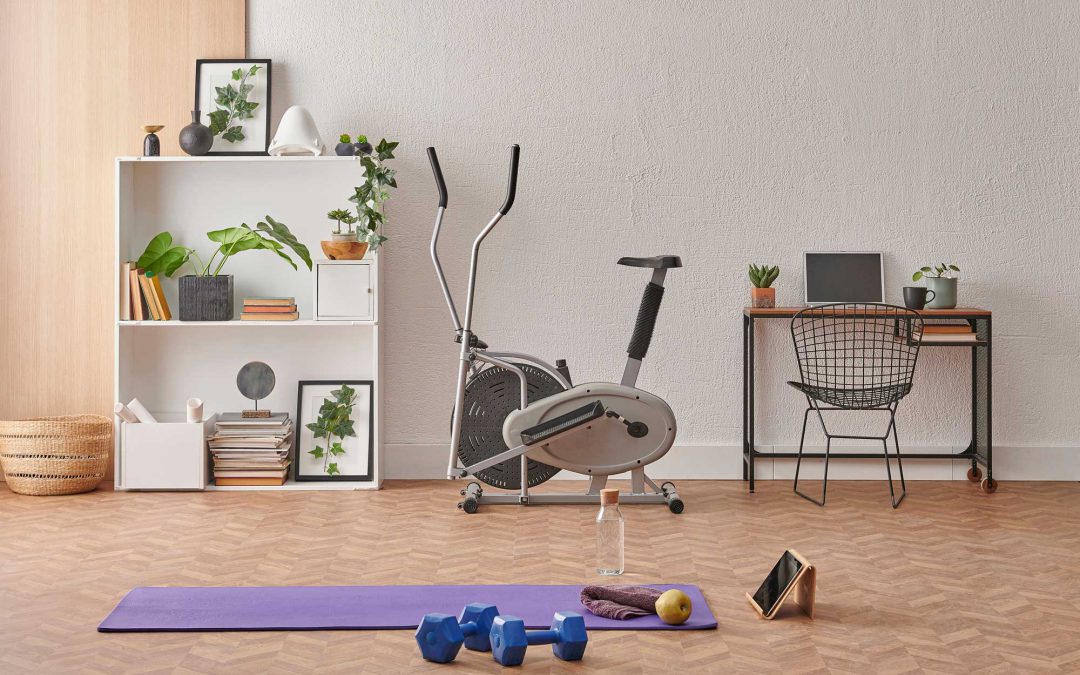This surge in sales doesn’t necessarily relate to a massive increase in the use of home gyms, however. In fact, new research has revealed that vast amounts of state of the art gym equipment is standing by, unused, in homes up and down the country.
The Covid-19 pandemic shut down gyms, leisure centres and exercise classes at a rapid pace, so it’s not surprising that purchases of home gym equipment shot up as a result.
Research published by GlobalData reveals that half of UK consumers bought home workout products during the pandemic. The revenue of American exercise equipment company Peloton also increased dramatically during this period, with annual revenue rising by 120%.
We wanted to find out more about how home gym equipment is being used, and to what extent this equipment is going to waste – despite our best intentions!
The team at Hussle surveyed a range of demographics, with respondents aged from 16 to 61 and over. Feedback was gathered from both males and females, with answers taken from people all over the UK.
Here’s what we found.
Unused gym equipment is putting a strain on bank balances
Gym equipment is often purchased for home use by those with a new motivation for exercise, but all too often we slip back into bad habits. And that tends to mean a huge amount of money being wasted on equipment we are unlikely to use.
Our research found that over a quarter (27%) of people in the UK have almost £200 (£180.50) worth of unused gym equipment in their homes. Not only that, 8% have an average of £727 worth of unused gym equipment, while 4% have unused gym equipment worth £1,480. Just a third of respondents (31%) had less than £10 worth of unused gym equipment lurking in their homes.
Gym equipment is still in high demand
Evidence suggests that all too often home gym equipment isn’t used as much as we think it might be, but this hasn’t quelled the demand for such equipment.
The past three years have seen a significant uptick in the sales of home gym equipment. During this period, 30% of people in the UK have bought some home gym equipment for home use.
The popularity of home gym equipment is highest amongst the younger demographics, but it’s a huge sell with both female and male consumers. The top buyers of home gym equipment are those aged between 21 and 30. Greater London saw the biggest number of purchases, with 7% in this location purchasing home gym equipment in the past three years.
Lack of use remains a huge issue
An incredible number of consumers purchase home gym equipment that they never actually use.
Our research found that over a third of people have bought equipment that they don’t use, for reasons ranging from a lack of motivation to disinterest in their chosen equipment.
Consumers in Greater London bought more gym equipment than those elsewhere in the country in recent years, but they’re also the worst offenders when it comes to buying equipment and not using it. In this area, 8% of respondents admitted to buying home gym equipment that they never use.
Commonly Asked Questions On Unused Gym Equipment
Which home gym equipment is least likely to be used?
The Hussle team sought to find out which equipment was least likely to be used, and which home gym investments might actually pay back in terms of health benefits (because we’re actually using them!).
The gym equipment most commonly purchased and not used includes items such as barbell sets and dumbell sets. Of the respondents surveyed, 13% claimed to have bought these and not used them. Other costly gym equipment which tends to remain unused includes exercise bikes (4%), kettlebell sets (3%) and resistance bands (3%).
The Peloton bike has been the talk of the fitness industry in recent years, with huge numbers of exercise enthusiasts investing in the stationary bike and app combo. This impressive piece of kit still features on our list of unused home gym equipment, however. Of those surveyed, 2% admitted to buying a Peloton bike and not using it, with a similar number doing the same with a home treadmill.
The battle of the sexes: how does the use of home gym equipment stack up?
We found that males were more likely to buy home gym equipment that they would not go on to use. The research found that 21.30% of males answered “no” to the question “do you use the home gym equipment you purchased in the past three years?” The same answer was given by 12.52% of female respondents.
Females, however, were less likely to answer “yes, regularly” to the same question. When asked, just 5.40% of female respondents claimed to have put their gym equipment to regular use. A higher number of males answered affirmatively, with 12.14% saying “yes, regularly” to this question.
Hussle has created a network of gyms, pools, spas and health and fitness apps, accessible through a single pass. Sign up here.



